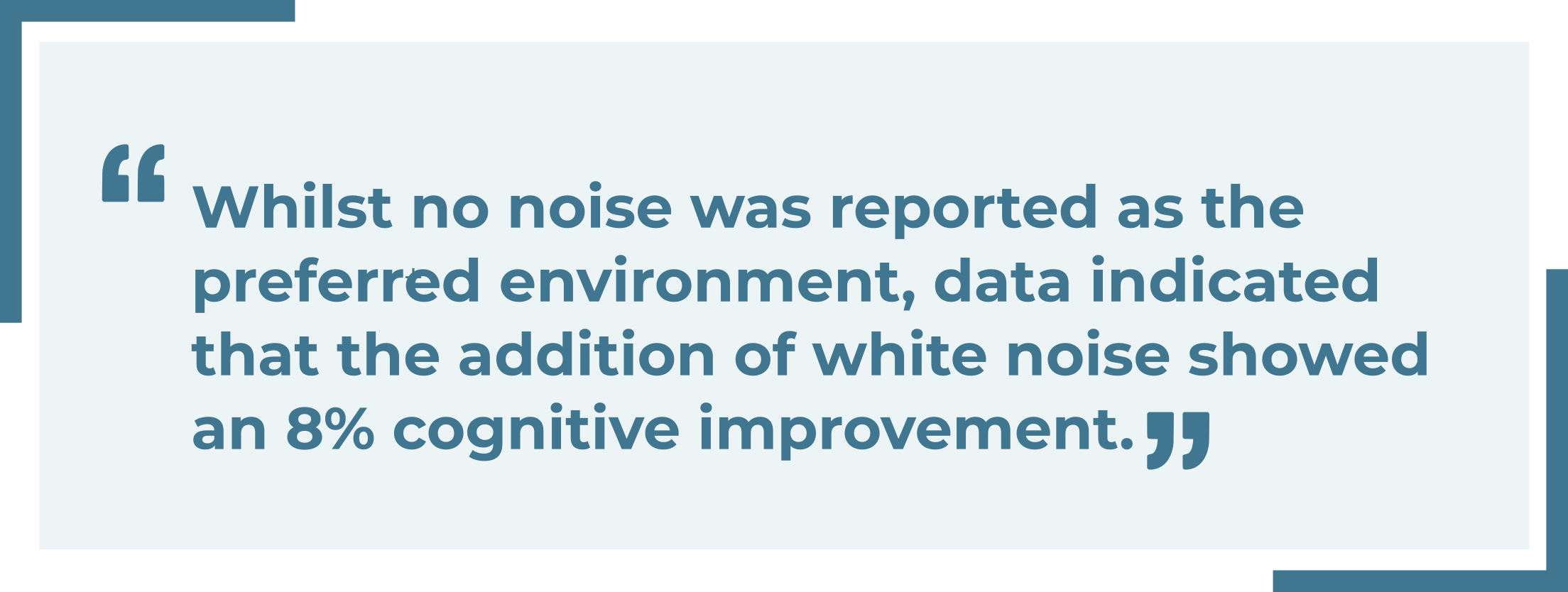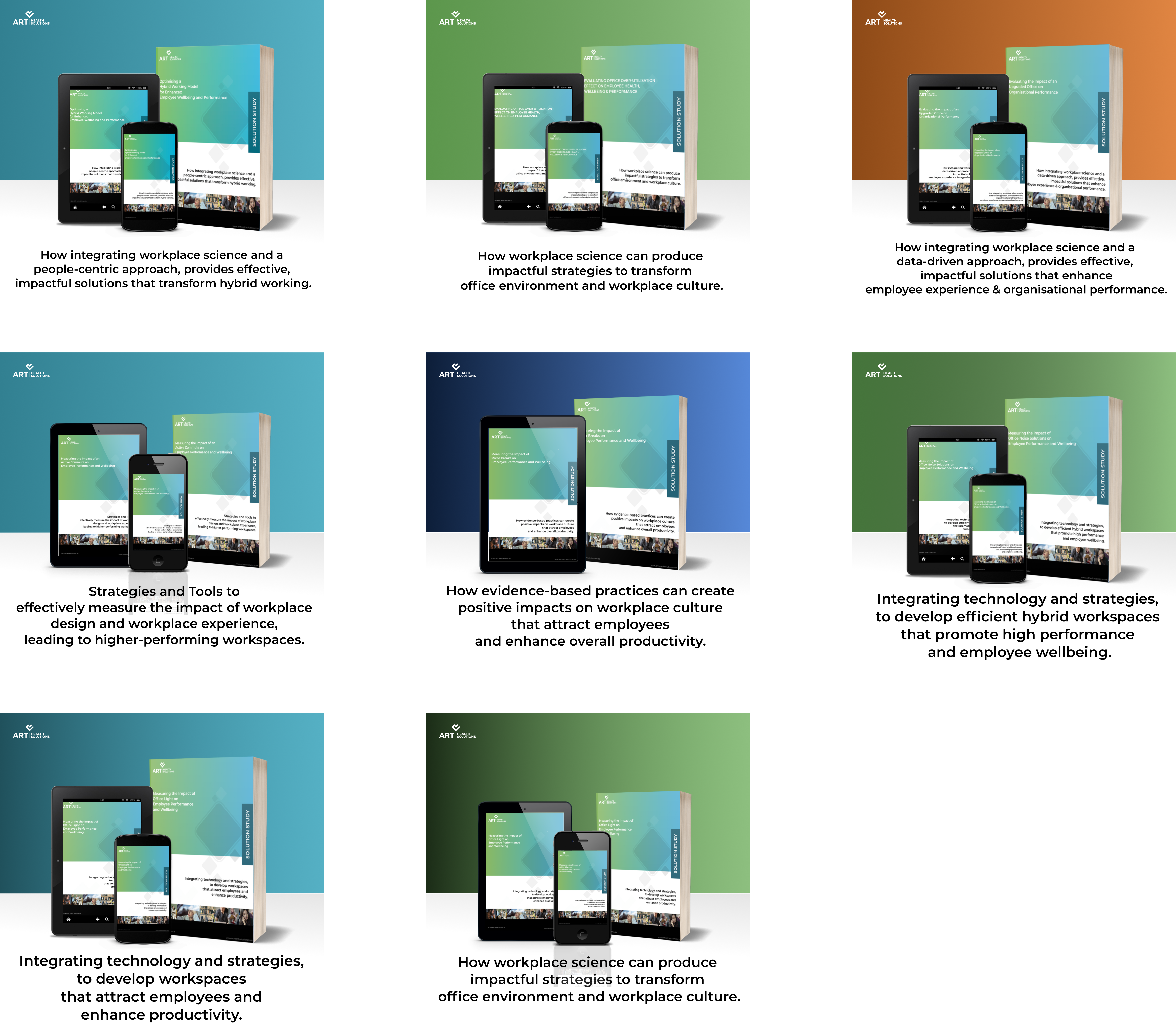
X
Get A Call Back

Measuring the Impact of Office Noise Solutions on Employee Performance and Wellbeing
Problem
Noise is commonly reported as one of the biggest pain points for employees in open plan offices, with just 30% of employees reporting satisfaction with noise levels in their workplace (Leesman).
With that knowledge, our client wanted to test an acoustic treatment (soundscaping) to see if it would have a positive effect on employee cognitive performance, productivity, and wellbeing, leveraging workplace science to inform their workplace strategy.

Current and potential risks:
- Unnecessary spending due to incorrect prioritization of soundscaping over other methods.
- Without objective, evidence-based insights, the client is unaware of the impact that soundscaping may have on employee performance, which could lead to poor workplace experience and ineffective workspace solutions.
Method
In order to address this question, we gathered employee experience, wellbeing, and performance data from over 50 employees, aligning with our people-centric and evidence-based approach. We collected a variety of data sources over a two-week sprint period, observing employees’ wellbeing and performance in the office.
Employees were measured under three conditions: no noise, office noise, and white noise. The benefit of running sprint-style research is that it is a cost-effective way to gather insights into specific areas, allowing for quick wins to inform change faster than traditional projects, fostering innovation and transformation.

Findings
- The “no noise” condition was consistently the highest condition for satisfaction and preference.
- 66% of participants found the soundscaping ineffective, with no improvements to satisfaction levels or performance.
- However, analysis showed significant improvement in cognitive performance tasks in the white noise (8% improvement) and office noise conditions (7%). This indicates that while participants might have psychologically preferred complete silence for highly focused tasks, a certain level of sound/noise might have actually helped with mental alertness, aligning with workplace science studies that explore the relationship between auditory stimuli and performance.
Actions
⭕ To support the client’s decision-making regarding the wider implementation of soundscaping across the portfolio, enhancing their corporate real estate strategy.
⭕ To support the real estate team in further investigating different sound masking options to improve workplace design and culture.

Value
This study provided a quick win, which would otherwise have cost the client significant money and time resources to the detriment of employee satisfaction and experience. By utilizing innovative solutions and effective measurement, the client avoided unnecessary expenditures and improved workplace performance.
Key Takeaways
The findings and actions delivered through this project allowed the client to assess the impact of sound masking on employee cognitive performance and wellbeing.
This project highlighted the effect and opportunities to better support employees by further investigating other viable options to mitigate unwanted noise and create a better auditory experience.

Explore more real life examples in our solutions series and discover how our unique experience across elite sport, academic research and the corporate landscape, combined with our scientific and data-driven approach, puts us in a unique position to identify opportunities that can drive increased productivity, performance and positively impact workplace wellbeing.

www.arthealthsolutions.com/solutions
